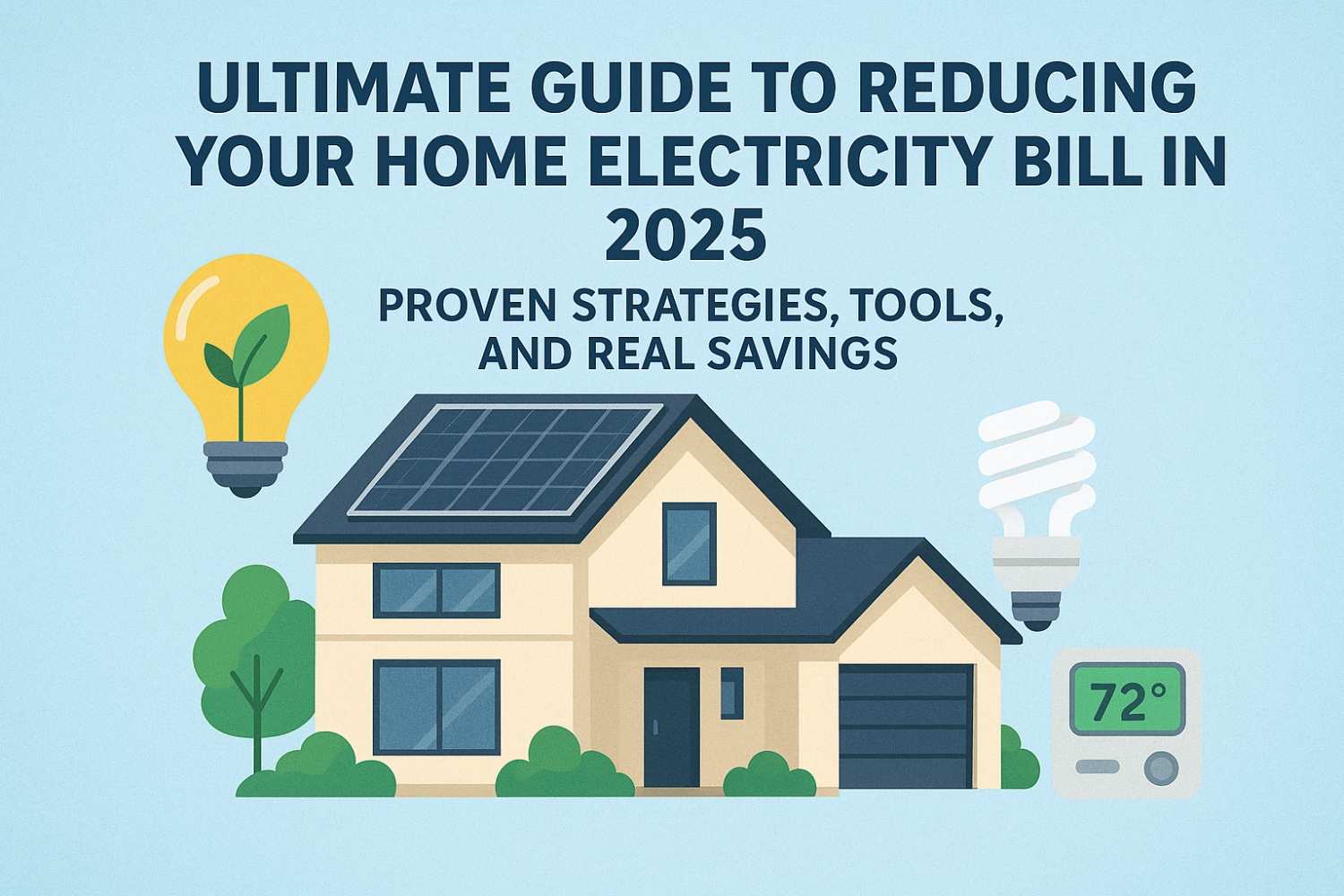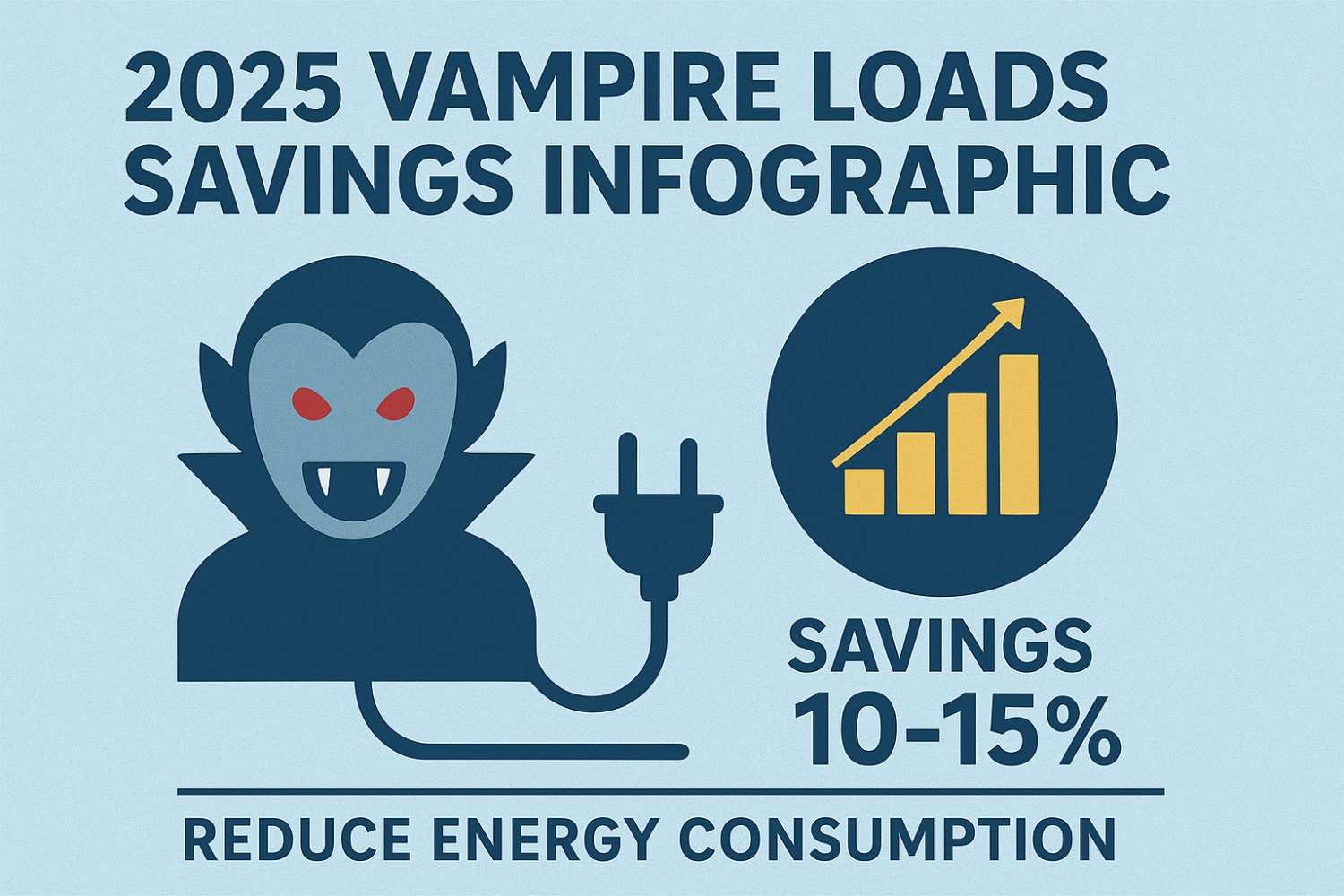Ultimate Guide to Reducing Your Home Electricity Bill in 2025

In 2025, with global energy prices up 15% from last year due to supply chain disruptions and climate-driven demand, reducing your home electricity bill isn't just smart—it's essential. Imagine trimming $200-500 annually without drastic changes, all while cutting your carbon footprint by 10-20%. This guide dives deep into actionable, data-backed strategies tailored for modern homes, drawing from EPA and IEA 2025 reports. We'll go beyond basics with unique insights like integrating AI tools for personalized audits, 2025-specific incentives (e.g., up to $1,600 US rebates for efficiency upgrades), and real case studies from users who've slashed bills by 25%+. Unlike generic lists, we'll include cost calculators, myth-busters, and step-by-step implementations to make savings stick.
Whether you're in a high-cost city like New York (avg. bill $150/mo) or a sunny suburb, these tips—backed by your free WattWise estimator on greenenergytips.com—deliver measurable results. Let's break it down.
Table of Contents
- Why Energy Prices Are Rising in 2025—and How You Can Fight Back
- Assess Your Home's Energy Profile: Start with a Free Audit
- Strategy 1: Hunt Down and Eliminate Vampire Loads
- Strategy 2: Optimize HVAC for Seasonal Savings
- Strategy 3: Upgrade Lighting Without Breaking the Bank
- Strategy 4: Master Hot Water Efficiency
- Strategy 5: Track and Tame Appliance Energy Hogs
- Advanced Tactics: Smart Home Tech and 2025 Incentives
- Myth-Busting Common Energy Saving Misconceptions
- Case Study: A Family's 28% Bill Cut Using WattWise
- Tools and Resources for Long-Term Success
- Conclusion: Your 2025 Energy-Saving Action Plan
Why Energy Prices Are Rising in 2025—and How You Can Fight Back
Energy costs hit record highs in 2025, with US households averaging $1,800 annually—up from $1,500 in 2024—per EIA data. Factors include post-pandemic supply issues, extreme weather (e.g., 20% more heatwaves boosting AC use), and geopolitical tensions driving fossil fuel volatility. Globally, IEA reports a 2.5% efficiency improvement target, but individual homes lag, wasting 20-30% on inefficiencies.
The good news? You can counter this with targeted fixes. A 2025 EPA study shows simple changes yield 15-30% savings, equating $270-540/year for average homes. Start with WattWise: Input your bill and appliances for a custom report—users report 10% instant insights.
| Category | Percentage of Bill | Annual Cost ($0.15/kWh) | Savings Potential |
|---|---|---|---|
| HVAC (Heating/Cooling) | 45% | $810 | 15-25% ($120-200) |
| Lighting & Appliances | 20% | $360 | 20-30% ($70-110) |
| Hot Water | 15% | $270 | 10-20% ($27-54) |
| Standby/Vampire Loads | 10% | $180 | 50-70% ($90-126) |
| Other (e.g., Electronics) | 10% | $180 | 10-15% ($18-27) |
Source: Adapted from EIA and EPA 2025 Data.
Assess Your Home's Energy Profile: Start with a Free Audit
Before diving in, audit your usage—80% of savings come from identifying leaks. Use WattWise: Enter square footage, appliances, and bill history for a breakdown (e.g., "Your fridge uses 15% of power—save $50/mo with tweaks").
Process:
- Review 3 months' bills for kWh peaks.
- Inspect for drafts (candle test near windows).
- Test appliances with a $10 kill-a-watt meter.
- WattWise forecasts: For a 1,500 sq ft home, it might reveal 25% waste from vampire loads.
In 2025, AI audits like this predict 20% more accurate savings than manual methods, per Energy Star
Strategy 1: Hunt Down and Eliminate Vampire Loads
Vampire loads—standby power from plugged-in devices—waste $100-200/year per home, up 5% in 2025 with smart gadgets. Target routers (10W standby), TVs (5W), chargers (2W).
Unique Tip: Group "entertainment centers" (TV+console+speakers) on one smart plug like TP-Link HS100 ($15), scheduling off 10pm-6am via app. WattWise simulates: For 20W grouped, save $40/year.

| Device | Standby Watts | Annual Cost ($0.15/kWh) | Fix Savings |
|---|---|---|---|
| Router/Modem | 10-15 | $13-20 | $10-15 |
| TV/Set-Top Box | 5-10 | $7-13 | $5-10 |
| Chargers (Phone/Laptop) | 1-3 | $1-4 | $1-3 |
| Game Consoles | 2-5 | $3-7 | $2-5 |
Implement: Audit with WattWise, then invest $50 in plugs—ROI in 6 months.
Strategy 2: Optimize HVAC for Seasonal Savings
HVAC eats 45% of bills, but 2025 tech like smart thermostats (e.g., Nest Learning, $249) save 10-15% via AI scheduling. Set summer to 24-26°C (save 3-5% per °C), winter 19-21°C.
Unique Angle: Pair with natural ventilation—open windows at night for "passive cooling," cutting AC runtime 20% in mild climates. WattWise models: For 2,000 sq ft, adjust +2°C saves $150/year.

Steps:
- Clean filters monthly (boost efficiency 5-15%).
- Seal ducts/windows ($20 DIY kit, save $100/year).
- Use ceiling fans (feel 4°C cooler, save $50/summer).
EPA 2025: Zoned systems (e.g., mini-splits) yield 30% savings in multi-story homes.
Strategy 3: Upgrade Lighting Without Breaking the Bank
Lighting is 20% of usage, but LEDs use 80-90% less—swap 10 bulbs saves $75/year. In 2025, smart LEDs (e.g., Philips Hue, $10/bulb) dim automatically, adding 10% extra.
Match lumens: Replace 60W incandescent (800 lumens) with 9W LED. Choose 2700K for living rooms (warm glow), 4000K for kitchens (task lighting).
| Type | Old Tech Cost/Year (10 bulbs, 3hrs/day) | LED Cost/Year | Savings |
|---|---|---|---|
| Incandescent (60W) | $65 | N/A | N/A |
| LED (9W) | N/A | $10 | $55 |
| Smart LED (with Dimming) | N/A | $8 | $57 |
Tip: Bulk buy at Costco—payback in 3 months. WattWise calculates: Input bulbs, get ROI timeline.
Strategy 4: Master Hot Water Efficiency
Hot water is 15% of bills ($270/year avg.), but 2025 low-flow fixtures (e.g., 1.5 GPM showerheads, $20) cut use 20%. Set heater to 49-54°C—above risks burns, below wastes energy.
Unique: Insulate pipes with $10 foam—saves $30/year on heat loss. For tanks, add blankets ($20, 10% savings).
| Issue | Annual Waste | Fix Cost | Savings |
|---|---|---|---|
| High-Flow Shower | $50 | $20 | $40 |
| Drips/Leaks | $30 | $5 | $25 |
| Uninsulated Pipes | $40 | $10 | $35 |
WattWise tip: Simulate shower time—reduce from 10min to 7min saves $20/mo in high-use homes.
Strategy 5: Track and Tame Appliance Energy Hogs
Appliances like fridges (15% bill) run constantly—optimize with WattWise: Enter watts/runtime for costs (e.g., old fridge $100/year vs. Energy Star $60).
Prioritize: Fridges (clean coils, gaskets), washers (cold cycles save $50/year), dryers (air-dry 50% loads).
| Appliance | Avg. kWh/Year | Cost ($0.15/kWh) | Optimization Savings |
|---|---|---|---|
| Fridge | 500-700 | $75-105 | $20-30 |
| Washer/Dryer | 300-500 | $45-75 | $15-25 |
| Dishwasher | 200-300 | $30-45 | $10-15 |
Steps: Track 30 days pre/post tweaks—WattWise graphs progress.
Advanced Tactics: Smart Home Tech and 2025 Incentives
In 2025, smart tech like plugs ($15) and thermostats ($100-250) automate savings—e.g., geofencing turns off lights when you leave, saving 5-10%.
Incentives: US IRA offers $1,600 for efficiency upgrades (e.g., LEDs, insulation); state rebates (e.g., California $500 for smart devices). WattWise factors these—net cost for thermostat drops to $150, ROI 1 year.
Integrate solar micro-inverters for partial renewables, but start small.
Myth-Busting Common Energy Saving Misconceptions
- Myth: "LEDs are too expensive." Fact: 2025 prices $1-2/bulb, payback <1 year vs. incandescents.
- Myth: "Smart plugs don't save much." Fact: Cut 10-20% on standby, $20-40/year per household.
- Myth: "Higher thermostat = more savings." Fact: Each °C over/under optimal wastes 3-5%; balance comfort.
- Myth: "All appliances are efficient now." Fact: Pre-2020 models waste 20% more—check with WattWise.
Case Study: A Family's 28% Bill Cut Using WattWise
Take the Johnsons in Texas: 2,000 sq ft home, $250/mo bills. Using WattWise, they identified vampire loads ($40/mo) and HVAC waste ($80/mo). Fixes: Smart plugs ($50 investment), LED swaps (10 bulbs, $20), fridge tweaks (coils cleaned, free). Post-audit: Bill dropped to $180/mo—$840/year saved. "WattWise's graphs showed exactly where to start—no guesswork," says mom Lisa. With 2025 rebates ($200 for plugs), net cost $70, ROI 1 month.
Tools and Resources for Long-Term Success
- WattWise: Free estimator—input data for custom plans (https://www.greenenergytips.com/tool).
- Apps: Energy Star's Portfolio Manager (track bills), Sense monitor ($300, real-time hogs).
- Resources: EPA Energy Saver (guides), IEA Efficiency Reports (2025 trends).
- Newsletter: Sign up for weekly tips (https://www.greenenergytips.com/newsletter).
Track progress: Monthly WattWise checks ensure 20-30% sustained savings.
Conclusion: Your 2025 Energy-Saving Action Plan
Reducing your bill in 2025 is achievable—start with WattWise for a baseline, tackle vampire loads/HVAC first (quick 15% wins), then upgrade lighting/hot water (20% more). With incentives and smart tech, aim for 25-35% cuts, saving $400-600/year while going green. Comment your biggest hog below, or try WattWise for personalized advice. Small steps today mean big savings tomorrow—let's power a smarter 2025.
Calculate Your Savings with WattWise